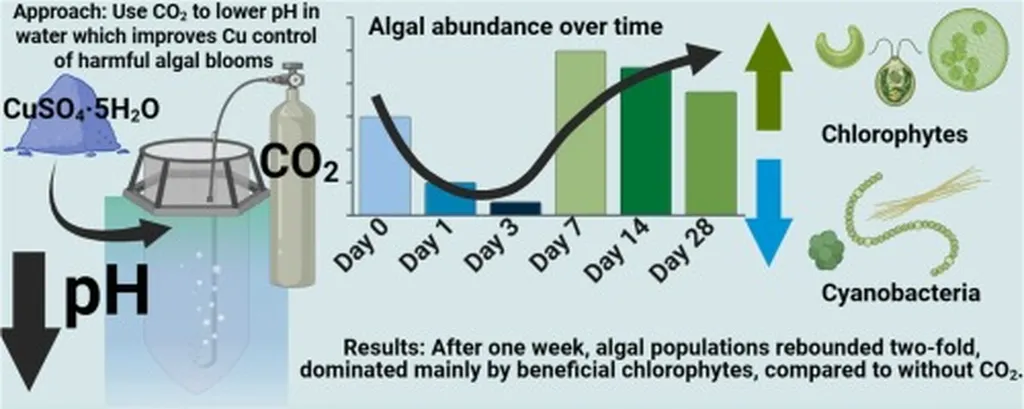In the intricate dance of ecosystems, freshwater organisms often find themselves exposed to a cocktail of pollutants, a reality that current risk assessments struggle to fully capture. A recent study published in *Environmental Chemistry and Ecotoxicology* sheds light on this complex interplay, revealing how the combined effects of copper (Cu) and the pesticide tebuconazole (Teb) can have synergistic toxic impacts on hook snout carps (Opsariichthys bidens). This research, led by Xinfang Li of the State Key Laboratory for Quality and Safety of Agro-products at the Zhejiang Academy of Agricultural Sciences, offers a mechanistic framework that could reshape how we evaluate ecological risks and manage agricultural practices.
The study employed an integrated multi-omics approach, a comprehensive method that combines various biological data to provide a holistic view of the toxicological responses in the livers of O. bidens. The findings were striking: simultaneous exposure to Cu and Teb elicited a pronounced synergistic toxicity, far more severe than the sum of their individual effects. “The synergy stems from their distinct modes of action,” explains Li. “Copper induces oxidative stress via the Fenton reaction, while tebuconazole disrupts cytochrome P450–mediated metabolism. This combination creates a self-reinforcing cycle of damage.”
The adverse effects observed included histopathological alterations, oxidative stress, apoptosis, inflammation, impaired detoxification, endocrine disruption, and disturbances in amino acid and glycolipid metabolism. The mixture of Cu and Teb initiated a cascade of disruptions, beginning with the collapse of the antioxidant system, leading to profound disruption of the TCA cycle and glycolipid metabolism, and ultimately culminating in an energy crisis accompanied by amplified apoptosis.
For the agriculture sector, these findings carry significant implications. Pesticides like tebuconazole are widely used to protect crops from fungal diseases, while copper is a common component in various agricultural fungicides and fertilizers. The study highlights the need for a more nuanced understanding of how these chemicals interact in the environment and their potential to cause unintended harm to non-target species. “This research underscores the importance of considering the combined effects of pollutants in risk assessments,” says Li. “It’s not just about the individual chemicals but how they interact in complex environmental mixtures.”
The study’s integrated multi-omics approach provides a powerful tool for future research. By combining data from genomics, transcriptomics, proteomics, and metabolomics, scientists can gain a deeper understanding of the mechanistic pathways involved in toxicological responses. This approach could be applied to a wide range of environmental pollutants, helping to identify biomarkers for early detection of toxicity and developing more effective strategies for ecological risk management.
As the agriculture sector continues to grapple with the challenges of sustainable pest management, this research offers a timely reminder of the need for integrated, holistic approaches. By understanding the complex interactions between different pollutants, we can better protect our ecosystems and ensure the long-term sustainability of agricultural practices. The findings from this study not only advance our scientific knowledge but also pave the way for more informed and effective environmental policies.

